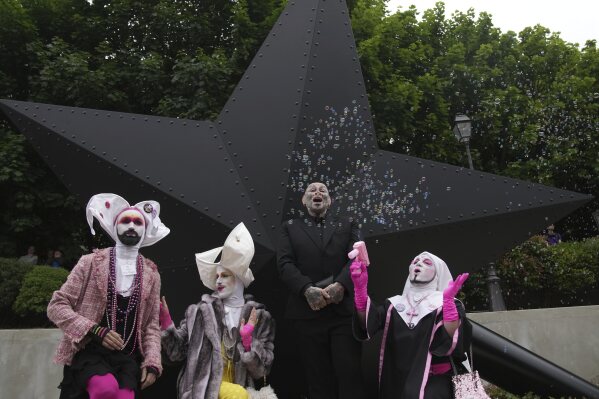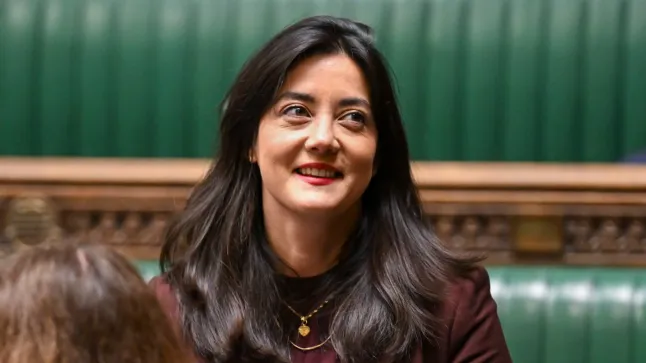The cinematic landscape of 2025 brings a vibrant array of films that delve into the complexities of human relationships, societal norms, and personal struggles. From heartfelt romantic comedies to intense moral dramas and surreal psychological thrillers, this roundup examines four standout films: A Nice Indian Boy, Nora, A Normal Family, and The Surfer. Each film offers a unique perspective on universal themes, enriched by cultural nuances, psychological depth, and bold storytelling. This article expands on the original reviews, exploring hidden truths, relevant research, and broader societal implications, providing a detailed analysis of each film’s narrative, themes, and impact.
A Nice Indian Boy: A Celebration of Love and Cultural Convergence
A Nice Indian Boy, directed by Roshan Sethi and adapted from Madhuri Shekar’s play, is a romantic comedy that transcends traditional genre boundaries. The story follows Naveen (Karan Soni), a reserved Hindu doctor, and Jay (Jonathan Groff), a free-spirited artist, as they navigate the complexities of their intercultural and same-sex relationship. The film’s charm lies in its ability to balance humor, romance, and serious themes such as generational trauma, cultural identity, and societal acceptance.
Plot and Themes
The narrative centers on Naveen and Jay’s evolving relationship, which begins with a chance meeting and blossoms into a heartfelt romance. Despite their differences—Naveen’s traditional upbringing contrasts with Jay’s uninhibited personality—the couple finds common ground in their shared appreciation for Bollywood’s extravagant emotionality. The film uses this cultural touchstone to explore how love can bridge divides, whether they be racial, cultural, or personal.
One of the film’s core themes is the negotiation of identity within familial and societal expectations. Naveen grapples with his parents’ traditional values, which emphasize arranged marriages and heteronormative relationships. Jay, meanwhile, confronts his own insecurities about fitting into Naveen’s cultural world. The film deftly handles these tensions, using humor to diffuse potential conflicts while acknowledging the weight of generational trauma and cultural shame.
“I think some people find Bollywood a bit much,” Jay says, “but I think it’s because we’re all embarrassed by the bigness of love.”
This quote encapsulates the film’s ethos: love, in its most unapologetic form, is a force that transcends boundaries. The screenplay, crafted by Eric Randall from Shekar’s original play, weaves these themes into a narrative that feels both universal and deeply personal.
Cultural and Social Significance
A Nice Indian Boy arrives at a time when representation of diverse relationships in mainstream media is increasingly vital. According to a 2023 study by the Williams Institute, approximately 1.8% of U.S. adults identify as part of the LGBTQ+ community, with a significant portion belonging to minority ethnic groups. Films like this one provide visibility to underrepresented groups, particularly South Asian queer individuals, who are rarely centered in romantic comedies.
The film also engages with the concept of “chosen family,” a recurring motif in queer cinema. Research by sociologist Amy Brainer highlights how queer individuals often create support systems outside traditional family structures, a dynamic reflected in Naveen and Jay’s reliance on friends like Paul (Peter S. Kim), whose comedic timing adds levity to the narrative. Scenes like the “focaccia party” underscore the importance of community in navigating personal and cultural challenges.
Production and Performances
The film’s executive producers, Justin Baldoni and Mindy Kaling, bring a star-studded pedigree that elevates the production. Kaling’s influence is particularly evident in the film’s nuanced portrayal of South Asian culture, drawing parallels to her work on Never Have I Ever. The performances by Soni and Groff are heartfelt, with Soni’s understated vulnerability complementing Groff’s exuberant charisma. The chemistry between the leads makes their romance believable, while the supporting cast, including Kim, adds depth and humor.
The film’s aesthetic, inspired by Bollywood’s vibrant visuals, enhances its emotional resonance. Cinematographer Jaron Presant uses warm, saturated colors to evoke the grandeur of Indian cinema, creating a fairy-tale atmosphere that distinguishes A Nice Indian Boy from typical rom-com fare.
Hidden Truths and Broader Implications
Beneath its romantic veneer, the film addresses the psychological impact of cultural assimilation and the pressure to conform. Naveen’s journey reflects the experiences of many second-generation immigrants, who, according to a 2024 study in the Journal of Ethnic and Migration Studies, often face “dual identity stress” as they navigate their heritage and adopted cultures. The film’s exploration of these themes makes it a significant contribution to discussions about identity and acceptance in modern cinema.
A Nice Indian Boy is available on Amazon Prime Video and Apple TV+, offering audiences a chance to experience its blend of humor, heart, and cultural commentary. Its unapologetic celebration of love and identity makes it a must-watch for fans of romantic comedies and socially conscious storytelling.
Nora: A Musical Meditation on Midlife and Motherhood
Nora, written and directed by Anna Campbell, is an introspective drama that uses music to explore the complexities of midlife. The titular character, played by Campbell herself, is a professional musician navigating the challenges of suburban life, motherhood, and unfulfilled creative ambitions. The film’s innovative use of music video fantasies and its realistic portrayal of personal growth make it a standout in the indie film scene.
Narrative and Character Development
Nora’s story begins with her decision to settle in the suburbs for the sake of her daughter, Sadie (Sophie Baaden). Her husband, Leo (Max Lesser), is frequently absent due to work, leaving Nora to manage the demands of parenting and suburban social dynamics. The film uses Nora’s musical fantasies to depict her internal struggles, portraying her as various archetypes—the housewife, the jilted lover, and the underdog. These sequences, rich with symbolic imagery, provide insight into her emotional landscape.
The film’s strength lies in its nuanced character development. Leo is not portrayed as a neglectful husband but as a partner with his own career demands, adding complexity to their relationship. Similarly, Nora’s interactions with her mother (Lesley Anne Warren) and Sadie’s teacher, Adam (Nick Fink), highlight her struggle to reconcile her past aspirations with her present reality.
Themes and Psychological Insights
Nora explores the concept of the “midlife crisis,” a phenomenon studied extensively in psychological research. A 2022 study in Developmental Psychology notes that midlife crises often stem from unfulfilled goals and societal pressures, particularly for women balancing career and family. Nora’s journey reflects this, as she grapples with the loss of her artistic identity while confronting the expectations of suburban motherhood.
The film’s use of music as a narrative device aligns with research on expressive arts therapy, which suggests that creative outlets like music can help individuals process complex emotions. Nora’s fantasies serve as a form of self-therapy, allowing her to explore her identity and ultimately redefine what “having it all” means for her.
“Having it all depends on what ‘it all’ means anyway,” Nora reflects, encapsulating the film’s central question.
Cultural and Artistic Context
Nora fits into a growing trend of indie films that prioritize authentic storytelling over commercial appeal. Its focus on a female protagonist navigating midlife challenges aligns with films like The Meddler (2016) and Gloria Bell (2018). By casting Campbell’s real-life daughter as Sadie, the film adds a layer of authenticity to the mother-daughter dynamic, enhancing its emotional impact.
The film’s premiere on Veeps, a platform known for live performances, underscores its musical roots. The choice of platform reflects a broader shift in film distribution, with streaming services increasingly championing indie projects. This accessibility ensures that Nora reaches audiences seeking introspective, character-driven stories.
Hidden Truths and Societal Reflections
The film subtly critiques the idealized image of suburban life, exposing the isolation and judgment that can accompany it. Nora’s ostracization by PTA moms highlights the social pressures women face, a topic explored in sociologist Lisa Wade’s work on gendered expectations in parenting. By addressing these issues, Nora contributes to a broader conversation about the sacrifices women make and the resilience required to reclaim their identities.
Nora premieres on Veeps starting Saturday, May 24, 2025, offering a poignant exploration of midlife, motherhood, and the power of music to heal.
A Normal Family: A Moral Dilemma in Modern Korea
Directed by Hur Jin-ho, A Normal Family is a provocative drama that examines the moral decay of affluent Korean society through the lens of a shocking incident. The film’s title is a deliberate irony, as it portrays two seemingly “normal” upper-class families grappling with the consequences of their teenage children’s violent actions.
Plot and Moral Questions
The film opens with a car crash, setting the stage for a narrative centered on an ethical dilemma. When their children drunkenly assault a homeless man, and a video of the incident goes viral, the families’ patriarchs—a lawyer and a pediatric surgeon—must decide whether to protect their children or hold them accountable. The film’s heavy-handed approach to its themes is evident from the outset, with the crash serving as a blunt metaphor for societal collapse.
The narrative unfolds over two hours, focusing on the parents’ internal and external conflicts. However, the film struggles to make its characters sympathetic, as their entitlement and moral failings overshadow any potential for audience connection. The climax, while intense, fails to deliver a cohesive message, leaving viewers questioning the film’s purpose.
Social and Cultural Context
A Normal Family reflects South Korea’s ongoing reckoning with class inequality and moral accountability. A 2024 report by the Korea Institute for Health and Social Affairs highlights growing public concern over the ethical lapses of the elite, a theme central to the film. The narrative draws parallels to real-world scandals, such as the 2019 college admissions bribery case, where wealth was used to shield privilege.
The film’s portrayal of affluent families aligns with sociologist Pierre Bourdieu’s concept of “cultural capital,” where wealth and status are leveraged to maintain power. By depicting the parents’ willingness to cover up their children’s crimes, the film critiques the systemic protection of privilege, a topic resonant in contemporary Korean cinema, as seen in films like Parasite (2019).
Critical Reception and Limitations
Critics have noted the film’s lack of subtlety, with Hur’s direction emphasizing dramatic expressions over nuanced storytelling. The actors’ performances, marked by “furrowed brows, tense jaw muscles, and crocodile tears,” fail to evoke empathy, undermining the film’s potential impact. A stronger script might have allowed audiences to wrestle with the ethical dilemma, but the film’s heavy-handedness limits its effectiveness.
A Normal Family screens at Living Room Theaters starting Friday, May 23, 2025. While it raises important questions about morality and privilege, its execution falls short of its ambitions.
The Surfer: Nicolas Cage’s Descent into Madness
The Surfer, directed by Lorcan Finnegan, is a neo-Ozploitation surf psychodrama that showcases Nicolas Cage at his most unhinged. Set on an Australian beach, the film follows a wealthy interloper (Cage) attempting to reclaim his family home, only to face opposition from a territorial surf gang led by Julian McMahon.
Narrative and Style
The film’s single-location setting, a remote Australian beach, is rendered with Spaghetti Western-inspired visuals and a haunting score. Cage’s character, unnamed and increasingly unmoored, descends into destitution as he camps in the beach parking lot, battling both the surf gang and his own psyche. The narrative oscillates between hyper-masculine confrontation and psychological unraveling, with writer Thomas Martin weaving in themes of generational trauma and possible schizophrenia.
Cage’s performance is the film’s centerpiece, blending raw emotion with his signature eccentricity. His character’s scream of “eat the rat!” while attempting to force-feed a rodent to an enemy is a quintessential Cage moment, blending absurdity with pathos. The film’s visual style, with ghoulish close-ups and stark landscapes, amplifies its surreal tone.
Psychological and Cultural Insights
The Surfer explores the psychological toll of displacement and obsession, themes resonant with research on identity and belonging. A 2023 study in Frontiers in Psychology suggests that individuals experiencing social exclusion, like Cage’s character, may exhibit heightened aggression and mental distress, a dynamic the film captures vividly. The surf gang’s cult-like behavior reflects real-world territorial conflicts, such as those documented in Australian beach culture studies, where localism can escalate into violence.
The film’s neo-Ozploitation aesthetic draws on Australia’s cinematic tradition of gritty, subversive storytelling, as seen in films like Mad Max (1979). Finnegan’s direction, combined with Cage’s idiosyncratic performance, creates a unique addition to this genre, blending psychological horror with social commentary.
Hidden Truths and Performance Analysis
Beneath its surface, The Surfer examines the fragility of identity in the face of external rejection. Cage’s character, with his fake tan and fabricated backstory, embodies the performative nature of belonging, a concept explored in sociologist Erving Goffman’s work on self-presentation. The film’s overextension into cosmic themes, such as schizophrenia, dilutes its focus, but Cage’s ability to “twist suffering into an idiosyncratic symphony” ensures its emotional impact.
The Surfer screens at Living Room Theaters through May 22, 2025, offering a wild ride for fans of Cage’s singular talent and unconventional storytelling.
Conclusion
These four films—A Nice Indian Boy, Nora, A Normal Family, and The Surfer—offer diverse perspectives on love, identity, morality, and madness. A Nice Indian Boy celebrates cultural convergence and queer love, while Nora uses music to explore midlife reinvention. A Normal Family critiques societal privilege but falters in execution, and The Surfer delivers a surreal exploration of displacement and obsession. Together, they reflect the richness of contemporary cinema, inviting audiences to engage with complex human experiences.





























0 Comments